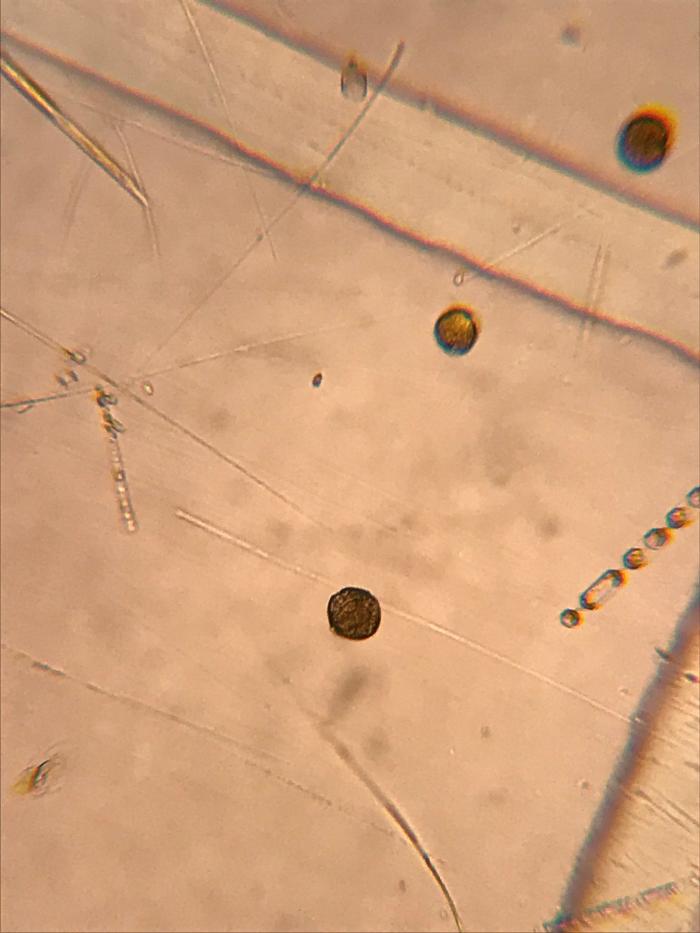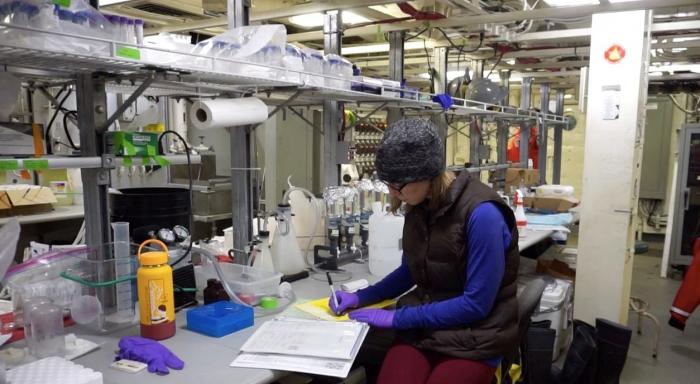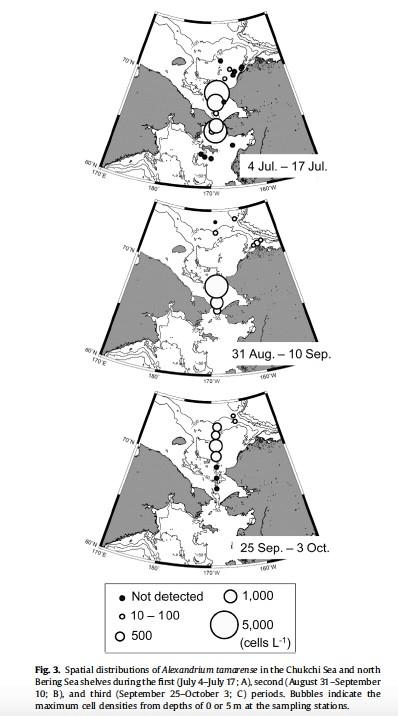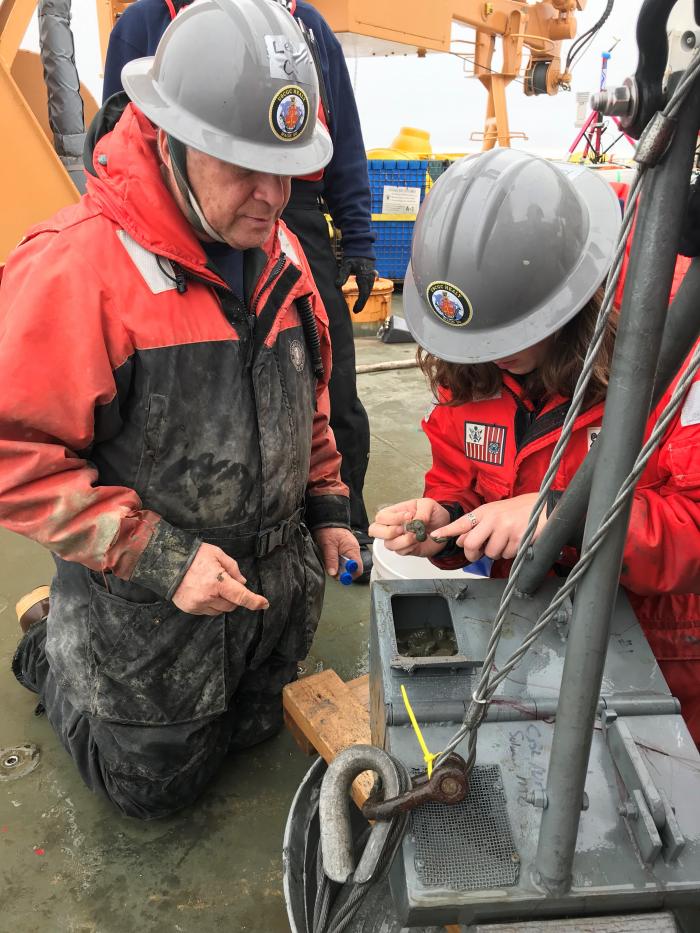Evie Fachon and her team from the Anderson Lab at the Woods Hole Oceanographic Institute (WHOI) are studying harmful algal blooms (HABs) on this expedition. As the oceans begin to warm and the sea ice melts, algae has access to more light. Algae are photosynthetic organisms and so warmer temperatures and increased sunlight result in more often and longer-lasting algal blooms. More specifically, Evie and her team are looking at the toxic dinoflagellate species Alexandrium catanella. It is one of the species that causes paralytic shellfish poisoning (PSP) and can affect organisms higher up in the food chain, including humans.


Dinoflagellates, like Alexandrium, are often consumed by filter-feeding bivalves or fish and invertebrate species. These organisms are then eaten by marine mammals and humans. Eating an organism contaminated with toxic algae can cause neurological problems and even death.

One of the interesting things about Alexandrium is that they have cysts that can lay dormant in mud at the bottom of the Arctic. This means that they can overwinter in the Arctic Ocean until conditions become nice enough (warm with light availability) for them to bloom. A paper by Natsuike et al. in 2017 looked at the distribution of cysts for the Alexandrium tamarense, another common species of this algae, in the Bering and Chukchi Seas. The benthic team and Evie have been working together to collect top-layer mud to continue this study and monitor the A. catanella species of this toxic algae.
Kelly Kapsar and Nicole Villeneuve were getting water samples in the CTDA research tool that is submerged in the water to measure conductivity (salinity), temperature, and depth. room today and took a new flag from an Ecology Explorers student from Nome. More flags to follow!

A Question From the Crow's Nest
What are the two most common toxins produced by harmful algal blooms?
Answer from previous post: Gray Whales can eat 1.3 tons in one day.



Comments